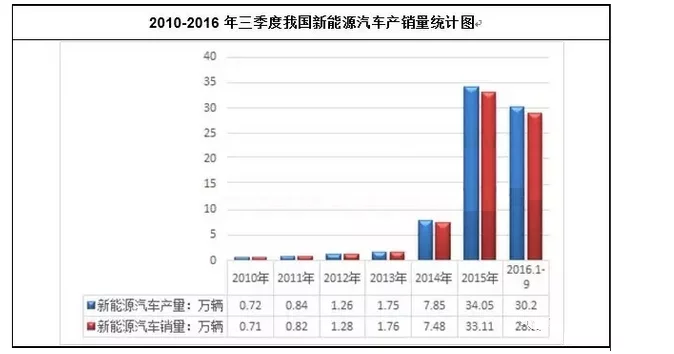The distribution of electric vehicle charging stations has been increasing year by year, and the sal
Published:2021-11-30 Category:Industry information Visitors:
According to China Market Research Network, electric vehicle charging stations refer to stations that charge electric vehicles, similar to today's gas stations. As low-carbon economy has become the main melody of China's economic development, electric vehicles, as an important part of the strategy and smart grid, as well as one of the strategic emerging industries determined by The State Council, will certainly become the focus of China's development in the future.
The National Development and Reform Commission, the National Energy Administration, the Ministry of Industry and Information Technology and the Ministry of Housing and Urban-Rural Development jointly issued the "Guide for the Development of Electric Vehicle Charging Infrastructure (2015-2020)", which focuses on providing guidance for the future layout of charging infrastructure in our country. It not only puts forward the overall goal of the development of charging infrastructure in the 13th Five-Year Plan period, In addition, the objectives and road maps of sub-regional and sub-site construction are put forward.
Currently, cities with EV charging stations in China include Beijing, Tianjin, Shanghai, Chongqing, Zhejiang City cluster (Hangzhou, Jinhua, Shaoxing, Huzhou), Jiangxi Province city cluster (Nanchang, Jiujiang, Fuzhou, Yichun, Pingxiang, Shangrao, Ganzhou), Hefei, Taiyuan, Xi 'an, Guangzhou, Shenzhen, Xiangyang, Qingdao, Wuhu, Changzhutan area.
The areas where EV charging stations are being or will be built include the Hebei City cluster [Shijiazhuang (including Xindi), Tangshan, Handan, Baoding (including Dingzhou), Xingtai, Langfang, Hengshui, Cangzhou, Chengde, Zhangjiakou], Fujian Province city cluster (Fuzhou, Xiamen, Zhangzhou, Quanzhou, Sanming, Putian, Nanping, Longyan, Ningde, Pingtan), Guangdong Province City cluster ( Foshan, Dongguan, Zhongshan, Zhuhai, Huizhou, Jiangmen, Zhaoqing), Zhengzhou, Wuhan, Haikou, Chengdu, Lanzhou, Kunming, Jincheng, Xinxiang, Dalian, Ningbo.
The distribution of electric vehicle charging station

The current development of electric automobile industry
According to China Market Research network released "" shows: in 2014, the production of new energy vehicles 78,500, sales 74,800; In 2015, the production of new energy vehicles reached 340,500 units and the sales volume was 331,100 units. In the first three quarters of 2016, China produced 302,000 new energy vehicles and sold 289,000.
Statistical chart of production and sales of new energy vehicles in the third quarter of 2010-2016

Production and Sales Volume of new energy Vehicles in China from 2011 to September 2016 (units)
|
年份 |
纯电动汽车 |
插电式混合动力 |
新能源汽车产量合计 |
新能源汽车销量合计 |
||
|
纯电动汽车产量 |
纯电动汽车销量 |
插电式混合动力产量 |
插电式混合动力销量 |
|||
|
2011年 |
0.57 |
0.56 |
0.27 |
0.26 |
0.84 |
0.82 |
|
2012年 |
1.12 |
1.14 |
0.13 |
0.14 |
1.25 |
1.28 |
|
2013年 |
1.42 |
1.46 |
0.33 |
0.3 |
1.75 |
1.76 |
|
2014年 |
4.86 |
4.5 |
2.99 |
2.97 |
7.85 |
7.47 |
|
2015年 |
25.46 |
24.75 |
8.58 |
8.36 |
34.05 |
33.11 |
|
2016年1-9月 |
22.9 |
21.6 |
7.3 |
7.3 |
30.2 |
28.9 |
Source: Automobile Industry Association
From January to September 2016, the output of pure electric vehicles was 229,000 units, accounting for 75.83% of the total. The output of plug-in hybrid electric vehicles was 7300 units, accounting for 24.17 percent of the total.
Statistical chart of China's new energy vehicle production in the third quarter of 2011-2016

In China, the development of electric vehicle charging stations is inevitable, and to seize the opportunity is also the way to win. Under the current situation, although the country has vigorously advocated and enterprises are eager to move forward, the introduction of electric vehicles into ordinary households will not be easy in the short term. The main reason is that rapid charging of electric vehicles requires instantaneous and powerful power, which cannot be met by the conventional power grid. It is necessary to build a special charging network, which involves the transformation of the entire national power grid. Major transformation of the national power grid is not a trivial matter, and costs a lot of money. It can't happen overnight.
A good solution to the problem of fast charging is to replace the long charging process by changing the battery of the car. A car needs to be equipped with two batteries. When one battery is used up, it will automatically switch to the other one. At this time, the used battery can be replaced at the changing station and the fully charged battery can be loaded. The replaced batteries are charged and maintained by the station, as long as the station has a significant number of spare batteries. The advantage of this method is that it is fast, and users can get on the road after replacing the battery, which is faster than refueling. In this way, along with other auxiliary means such as parking lot charging points, we believe that the popularization of electric vehicles is just around the corner.
[Disclaimer] This article is reproduced from the Internet for the purpose of conveying more information. It does not mean that the website agrees with its views or is responsible for its authenticity and accuracy. In particular, it does not guarantee the functionality and effect of the products in the article. The copyright of this site article belongs to the original author, the content is the author's personal point of view, this site reminds readers, the article is for reference only, does not constitute any investment and application suggestions, if you need to reprint, please contact the original author. If the content of the work, copyright and other issues, please contact us, we will be the first time to deal with! The Website reserves the right of final interpretation of this statement.